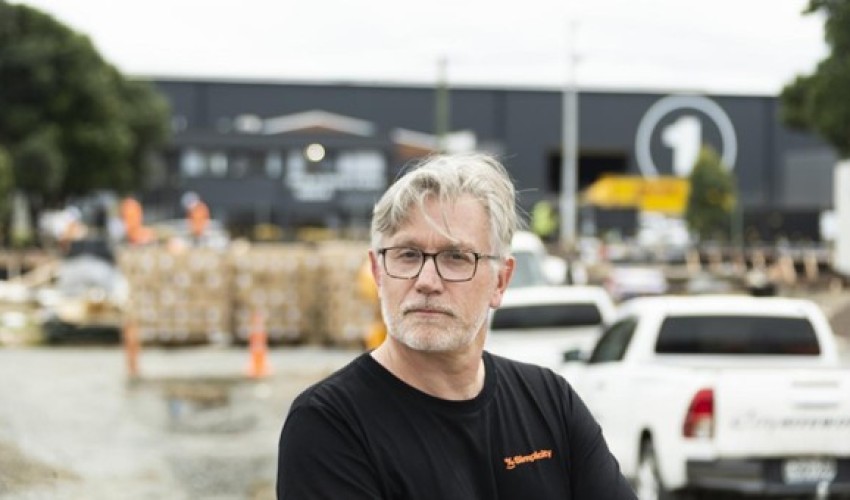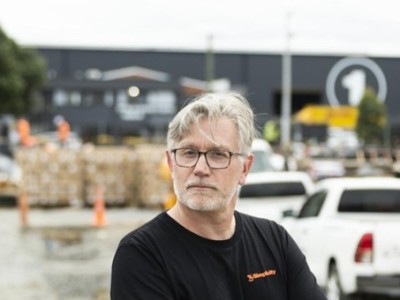Learn » Blog » Getting the infrastructure we actually want (and need)
Getting the infrastructure we actually want (and need)
Published on 12/11/2025

By Sam Stubbs. This article was originally written for The Post.
The Infrastructure Commission recently estimated that New Zealand had a $210 billion infrastructure deficit. Water infrastructure alone needs $110 billion of upgrades, as anyone in Wellington is painfully aware of. Even to maintain what we already have and plug our infrastructure deficit would require an estimated $30 billion a year of spending by 2050. Putting it another way, as a nation, we currently spend 6% of GDP on infrastructure, but will need to spend 10% to make up both the shortfalls in maintenance and new infrastructure.
That is a very big ask. And under normal circumstances an ask that big would be a throw in the towel moment, where voters, taxpayers and politicians realised it was impossible to achieve. Why? Because under the current method of funding infrastructure, there simply isn’t enough money. Economist Shamubeel Eaqub has estimated that by 2050 the cost of funding health and National Super will absorb all our personal income tax revenues.
Council funding isn't the answer
And it’s no better at councils either. In 2001, their combined debt was below their annual rates revenue - but now it’s over three times what they charge. Many councils cannot borrow any more, because the lowering of their credit rating would drive up their interest costs to unsustainable levels. So it all sounds like it’s game over for New Zealand ever getting the infrastructure we deserve, or even maintaining what we have. But it’s not. Far from it. We can afford this. Why? Because KiwiSaver can come to the rescue. You might expect a KiwiSaver manager like myself to say exactly that, but let me try and convince you with numbers and examples.
First, while an infrastructure deficit of $210 billion sounds an awful lot, it is actually less than the money KiwiSaver managers will have to invest in New Zealand in the future. If KiwiSaver contributions do not rise - and if it’s left as a voluntary scheme - KiwiSaver managers will still have up to $295 billion to invest by 2050 if they keep local investments at 30% of their total funds. That, as they say in my my industry, is a lot of wonga.
Copying overseas infrastructure models
Critics might say it would be unwise to invest all that new money in local infrastructure. But in Australia , Superannuation funds average 16% of their overall investments in local infrastructure. So if we simply copied Australia, $144 billion could be invested by 2050. That goes a long way towards closing the deficit. And KiwiSaver managers have started to bridge the gap. Simplicity recently announced the establishment of InfraKiwi, which has aspirations to have New Zealand shareholders only, list on the NZ Stock Exchange, a Golden Share, and to invest in newly built or existing infrastructure.
In principle, InfraKiwi would be a New Zealand version of a well tried model overseas, whereby pension funds take large and very long term positions in key infrastructure assets. This is because they provide reliable, long term, inflation-adjusted returns, and aren’t subject to market swings. Best in breed examples of this are Temasek in Singapore and Ontario Teachers Pension Plan in Canada. To give an example of how they think, the latter tried to buy a controlling stake in Auckland Airport, before being rebuffed as an offshore owner.
Asset types as food for thought
To illustrate how the the investments could operate, imagine if your KiwiSaver fund owned your local sewage treatment plant. Motivated users would insist it keep running, with the same zeal that we all raced for the toilet rolls in the Supermarket during the recent pandemic. And given the monopoly nature of this type of asset, the expected returns for the owner would be lower. By having long term owners, and long term customers, it would help achieve a fair result for all. In my experience, the only truly sustainable business models are ones that provide a long term, fair outcome, for all.
Keeping the family silver in the family
There are plenty of possibilities for KiwiSaver ownership of infrastructure assets, because it would be - effectively - public ownership, just without Government. And for those rightly concerned about selling the family silver, they can be comforted by knowing they are indeed selling it - to the family. A large listed company like InfraKiwi, with KiwiSaver, Iwi and public shareholders - all New Zealanders - could be owned by millions of us, forever.
In energy, water, transport, data and social infrastructure, there is a clear need for investment. I have asked the question at many public meetings - would you be happy if your KiwiSaver owned your power lines or water pipes?- and many hands go up every time. And for cash strapped councils, governments and infrastructure owners, KiwiSaver investment would be another way of both owning and financing what we want, in addition to properly maintaining what we already have.
Just look over the ditch for inspiration
One of the best examples is sitting to the left of us. Australia has much better infrastructure than New Zealand, and much of it is owned by their pension funds. I would much rather have new and well maintained infrastructure available and owned by my fellow citizens, than hope that a cash-strapped future Government could provide it. Governments can of course do some of it, but they can only afford so much. I would rather more money was spent on hospitals and national superannuation, while KiwiSaver investment could help with the rest.
And we can do the rest. We are saving via KiwiSaver, so why not invest it in some of the infrastructure we all use? I believe if the Aussies have done it, we certainly can.


